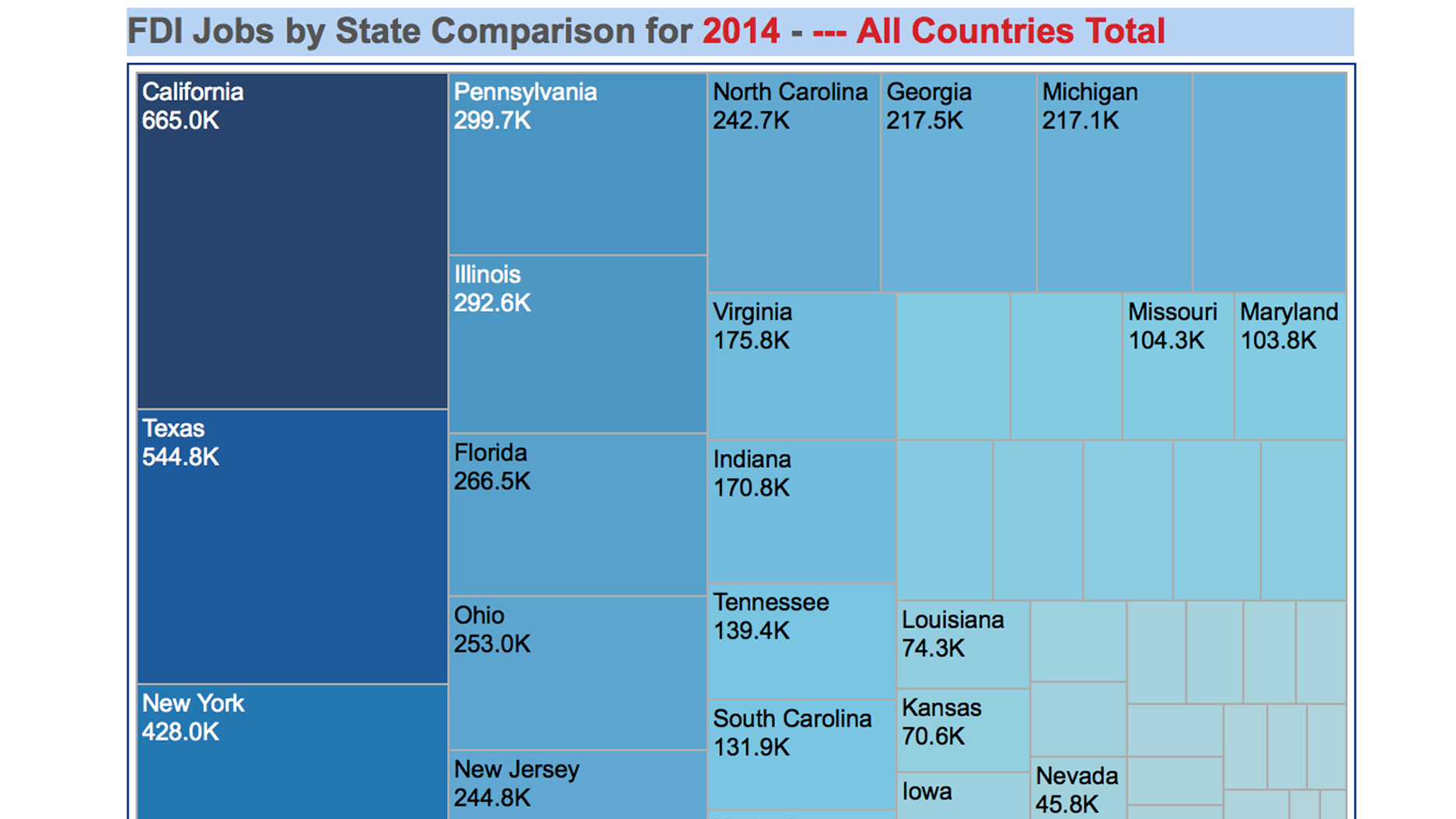Foreign direct investment
Which countries invest and employ the most workers in U.S. states?
Published 30 June 2017
The United States receives more foreign direct investment (FDI) than any other country in the world. The FDI position in the United States was valued at $3.1 trillion at the end of 2015.
The World’s Most Attractive Investment
The United States receives more foreign direct investment (FDI) than any other country in the world. The FDI position in the United States was valued at $3.1 trillion at the end of 2015.
Many of these investors are U.S. affiliates of foreign multinational corporations, like BMW, whose North American headquarters are in Woodcliff Lake, New Jersey. Shell, owned by Royal Dutch Shell, develops oil and gas reserves in the United States. Shell announced at the end of 2015 it would increase production at its manufacturing site in Geismar, Louisiana of polyethylene plastic for packaging and bottles, engine and industrial oils, and drilling fluids.
What Kinds of Activities are Foreign Companies Investing In?
While affiliates are engaged across a variety of industries, in 2014, just over 45 percent of the value added to the U.S. economy from U.S. affiliates came from the manufacturing sector – particularly chemicals including pharmaceuticals, transportation equipment, and machinery. Another 11 percent engaged in wholesale trade, and affiliates in the financial and insurance sectors comprised another 10.4 of value-added to the U.S. economy. Foreign investments are also significant in the U.S. information sector.
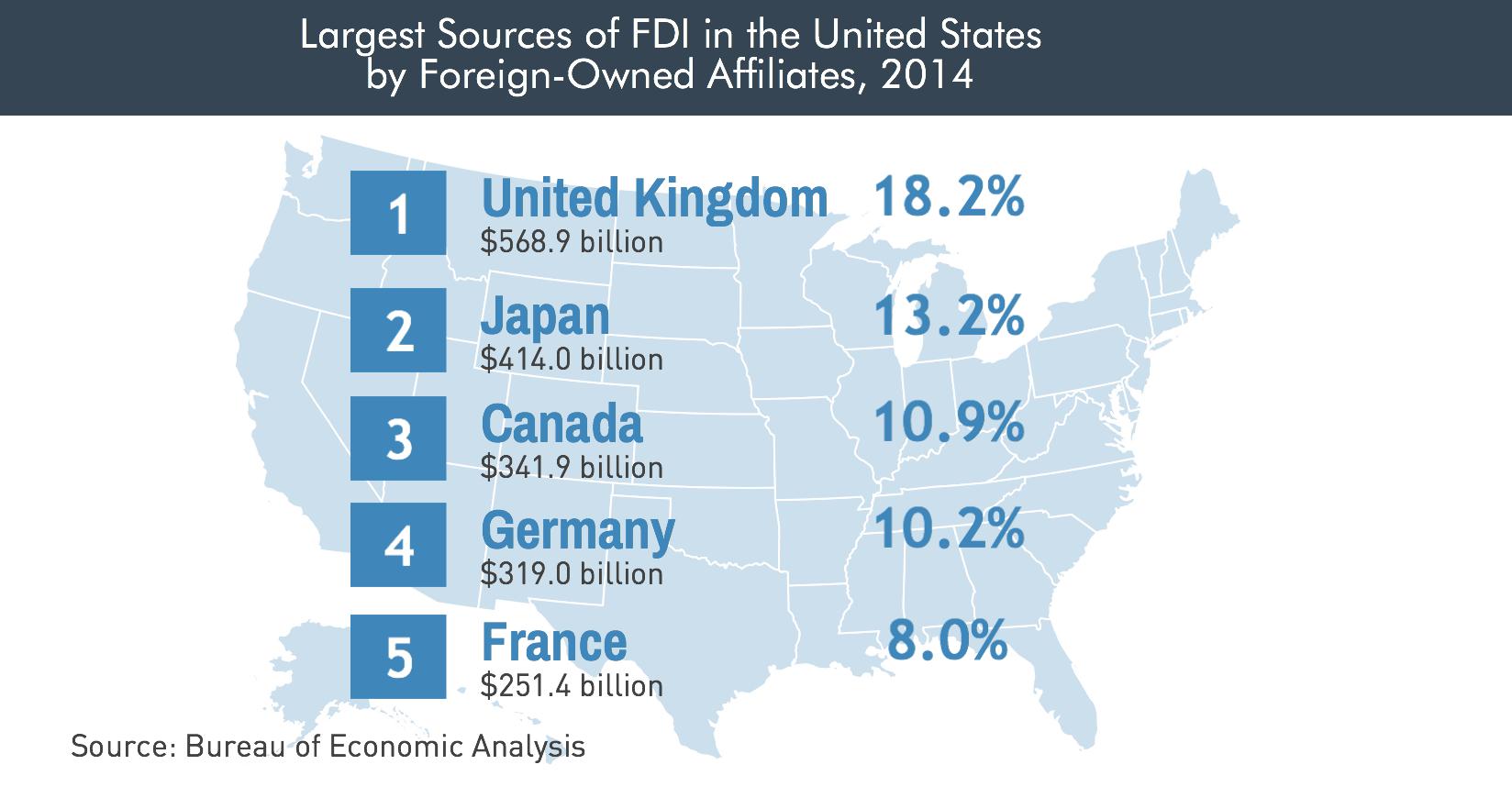
Why Do We Want Foreign Direct Investment?
In 2014, the operations of majority-owned U.S. affiliates added $869.1 billion to the U.S. economy. Affiliates employed 6.4 million American workers and performed $59.6 billion in research and development. They are heavy traders as well, accounting for an astounding 26 percent of total U.S. exports of goods in 2013, and 30.3 percent of imports of goods.
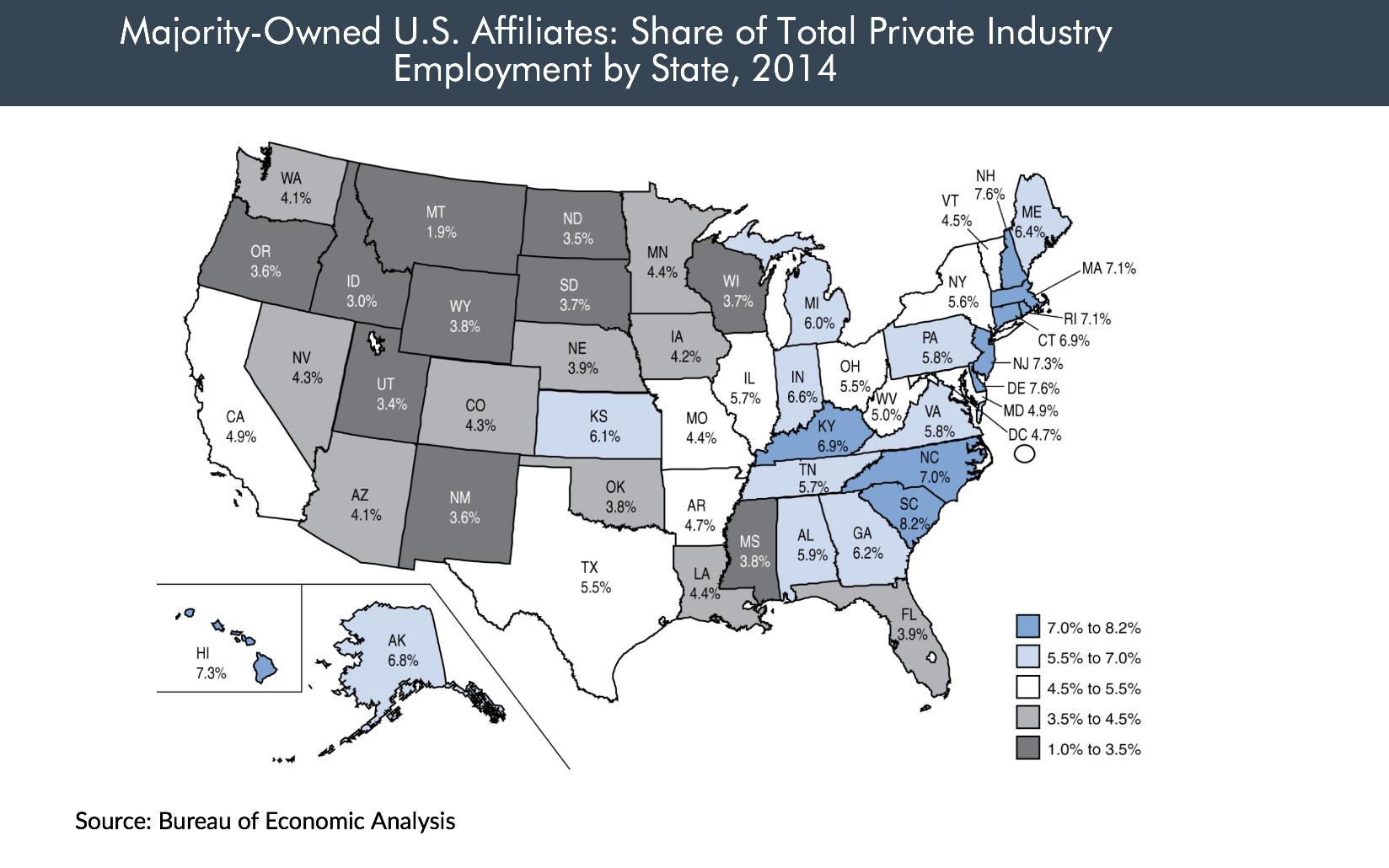
Game On
Even if the United States is the most sought after destination for foreign investment, U.S. states and cities know they cannot rest on their laurels; they are in a competition for global investment dollars. They all have state and local economic development organizations dedicated to attracting foreign direct investment (FDI).
Their goal is to show prospective investors that their region offers the best value in terms of land prices, tax and utility rates, a skilled workforce, and a supportive regulatory and R&D environment for new businesses. Not only do these investments bring jobs to their communities, they tend to be high-skilled, well-paying jobs. On average, jobs connected to foreign direct investments pay 30 percent better than the economy-wide average.
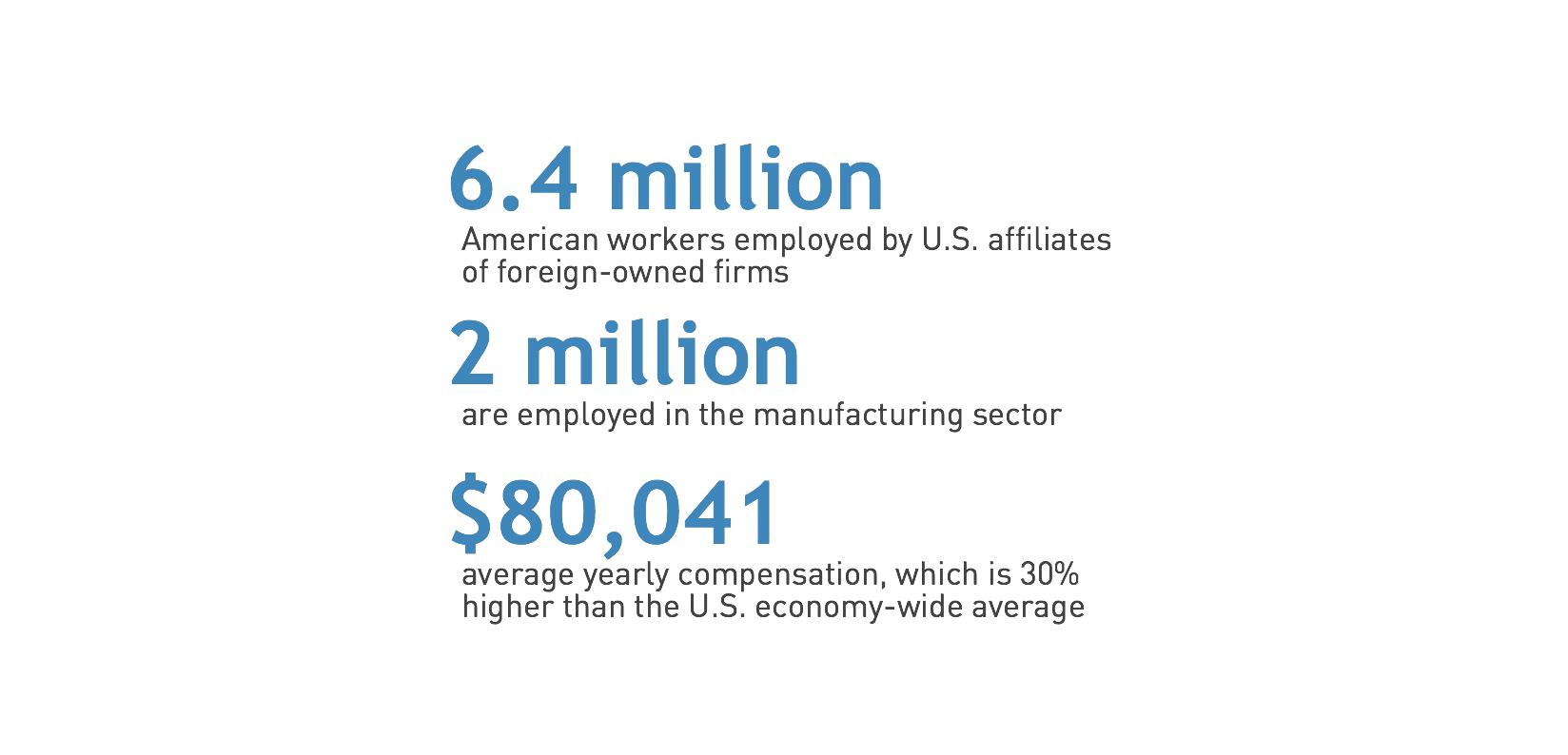
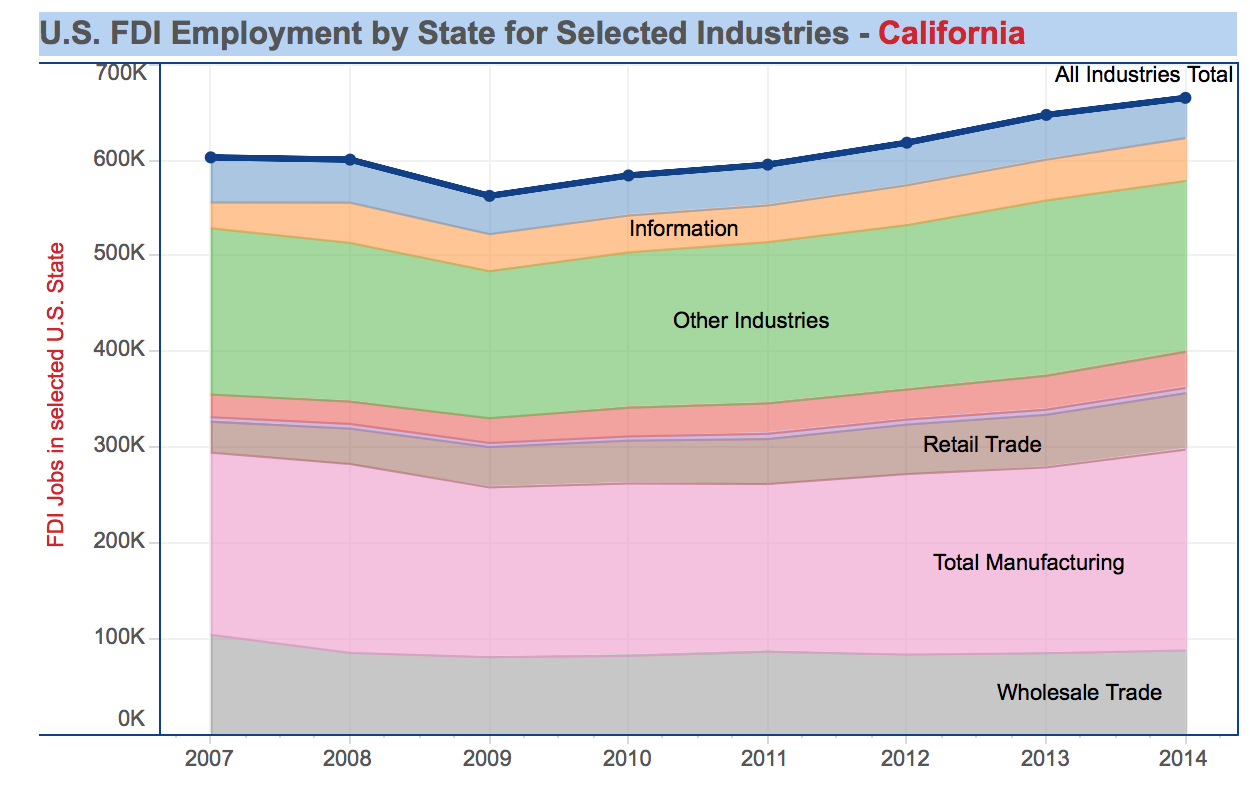 Find more data:
Find more data:
There’s a wealth of data on foreign direct investment maintained by the US Bureau of Economic Analysis. An organization within the US Department of Commerce called SelectUSA is dedicated to helping economic development organizations in each state position themselves to attract foreign investors. On their site is a user-friendly tool to explore the inward FDI stock by country of origin, industry, state destination and employment.
© The Hinrich Foundation. See our website Terms and conditions for our copyright and reprint policy. All statements of fact and the views, conclusions and recommendations expressed in this publication are the sole responsibility of the author(s).

